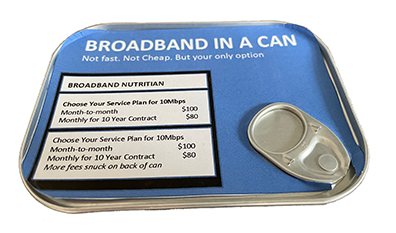
Buying internet service can be puzzling for customers. Different technologies can mean different speeds, which is not necessarily obvious to the customer based on the marketing promises made, and that’s just one of the many elements that can cause confusion.
Does the service provider throttle speeds over a certain data level? Do they only give you a certain amount of data use – a data cap – before you incur additional fees, or run out of data? Then there is traffic shaping and a whole host of other more technical issues that can impact your Netflix-binging experience, not to mention the quality of the router that they provide and (sometimes) charge an additional fee for.
The FCC is hoping to cut through some of the vagueness around these features, with a proposed “nutrition label” that will require internet service providers to list out at least some of the relevant information at the point of sale. That will mean that consumers can finally have a like-for-like comparison of various competitive options. That, clearly, is a good thing.
Of course, it won’t truly be accurate or too meaningful in terms of any speed data. I buy gigabit access, but any speed test I run shows that I’m getting less than half that. And as for proposed details such as “typical packet loss” and latency… well, most consumers will understand the nuances of that about as much as they care that my can of smoked herring has 6% of the daily value of calcium.
But still, it’s a good thing, and hopefully it will be approved before the end of the year, as expected. And, more importantly, that there is a standard format that must be adopted so that consumers can truly compare and contrast options.
That is, of course, if they have access to alternative broadband options in the first place, or even one broadband option. In our upcoming Broadband America Report, we estimate that just 66% of households that have an internet connection see broadband speeds at all, and across the continental U.S., only 50% of all households (so including those with no fixed broadband connection) see broadband.
As such, perhaps we should be considering the more reasonable nomenclature of simply calling the nutrition label “internet service” rather than “broadband” so that the very name of the label is not misleading the consumer.